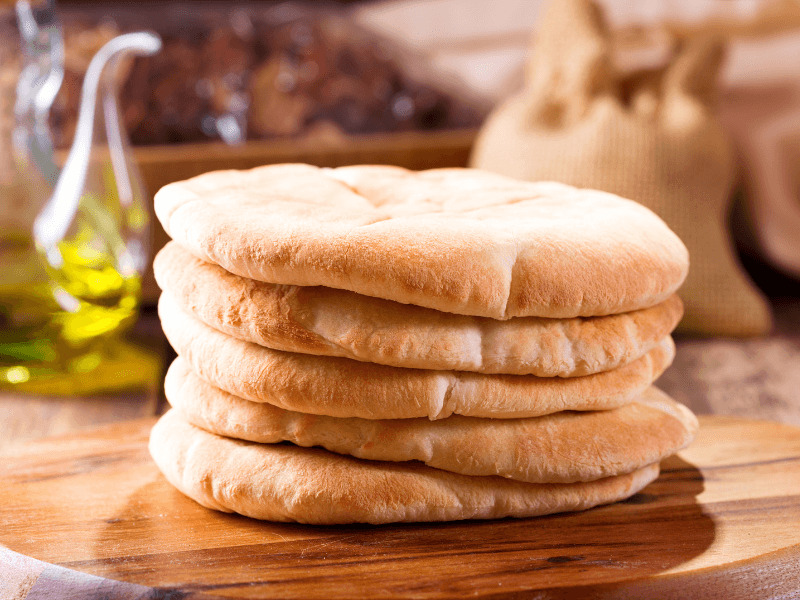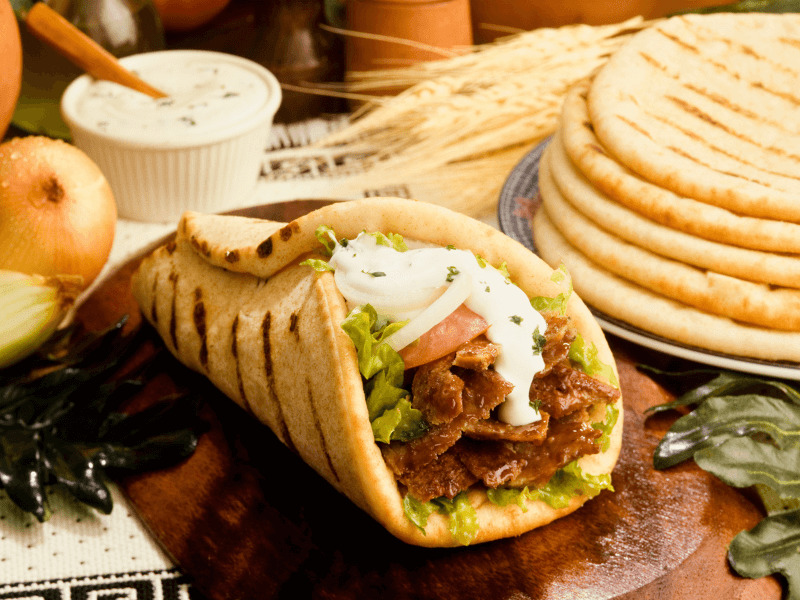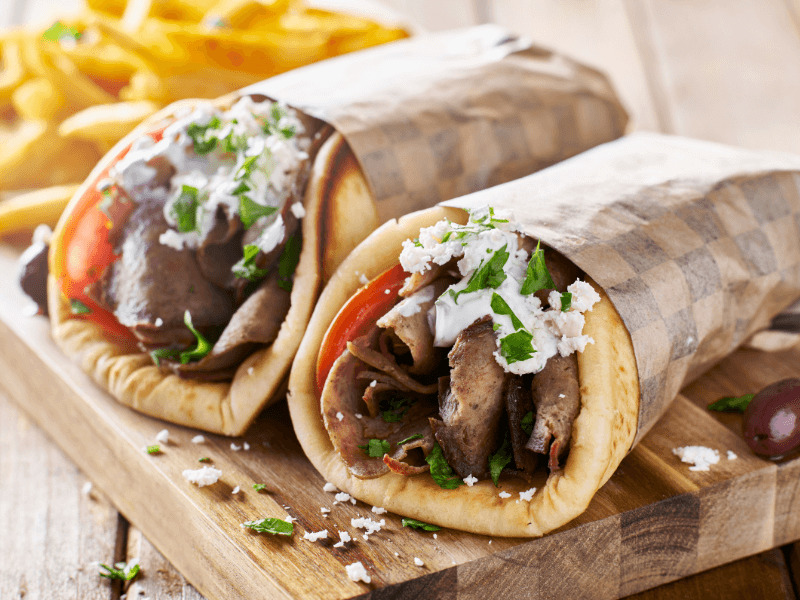Certain breads have become synonymous with their respective cultures, like the baguette in France, naan in India, and (I hate to say it) Wonder Bread here in the U.S. In the same vein, pita bread has become synonymous with Greek culture. But did you know that pita bread was not invented in Greece? Its origin story is a rather interesting one…

Origins In The Middle East
Like many classic Greek dishes (including the gyro, if you recall), pita bread made its way to Greece from the Middle East. Archeological evidence suggests that a flatbread similar to pita bread has been produced in the region that now encompasses Iraq, Lebanon, Jordan, and Syria for over 4,000 years. Flatbread being extremely portable, merchants from the Middle East often took this tasty treat with them during their travels, which is likely how it was introduced to Greece. I can relate: there were times when I was tempted to carry some pita bread in my purse. Luckily, you’re never far from a good street snack in Athens.
How Pita Bread Is Made
As with most of the world’s best breads, the key ingredients in pita bread are simple: flour, water, yeast, salt, and sometimes a bit of olive oil (this is the Mediterranean, after all). The dough is prepared by combining the ingredients and kneading until it becomes smooth and elastic. The dough is then left to rise, allowing the yeast to work its magic and create those amazing air pockets we all know and love.
After the dough has risen, it is divided into small portions and rolled into thin, round discs. Traditionally, pita bread is baked in a hot oven or on a hot griddle, which causes the dough to puff up dramatically. The high heat and quick cooking time create steam within the dough, resulting in the characteristic pocket that can be filled with various ingredients. While you’ve probably seen the wood-fired pita ovens at Greek/Middle Eastern restaurants (always a good sign), you can bake pita bread in your oven at home. My trusty old convection oven has churned out some mighty fine pita, if I do say so myself.
The process of making pita bread requires precision and timing. Overproofing the dough can lead to a flat and dense bread, while underproofing may result in a tough and chewy texture. Unfortunately, I’ve made both mistakes in my pita-making journey, but with practice, I think I have finally found the right balance. If only I could find that balance in other areas of my life…

Uses of Pita
One of my favorite things about pita bread – aside from its incredible flavor – is its versatility. Obviously, it makes a great wrap for Mediterranean classics like gyros, shawarma, and falafel. But, at the risk of sounding like an infomercial, it can be used for so much more. When cut in half, the pita’s pocket makes a great base for any sort of sandwich–and it tends to be lower in carbs than most traditional sandwich breads. Of course, pita chips are quite popular as well. For me, pita chips and hummus is right up there with tortilla chips and salsa. Finally, pita bread can make a good foundation for a simple, albeit unconventional, pizza.
But really, this list just scratches the surface. What are some of your favorite snacks or meals that involve pita bread? I would love to know in the comments! You might be rewarded with a pretty solid vegan pita recipe…

If you enjoyed this article or have suggestions on how we can improve it, please leave us a comment below. Also, make sure to check out other articles I’ve created or stories I’ve written about food culture – here.







